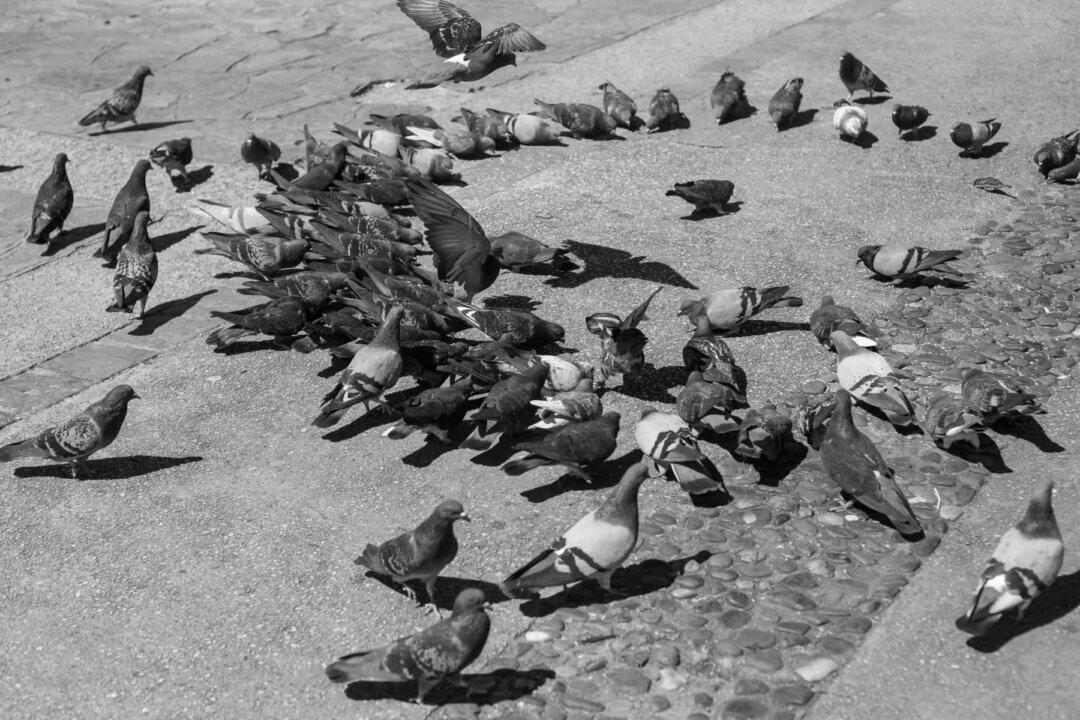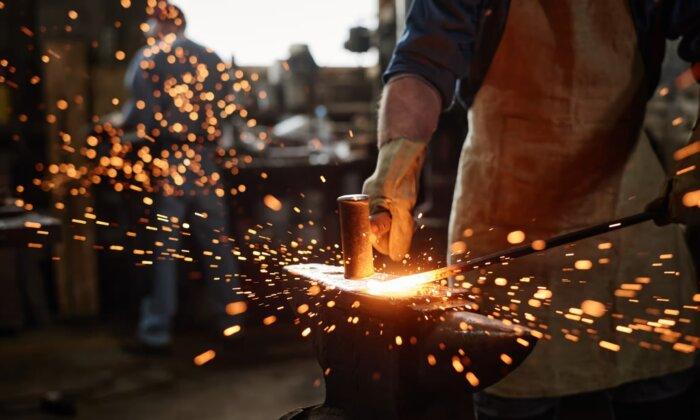Commentary
Before my youngest daughter turned two, she contracted
Hand, Foot, and Mouth Disease at her daycare. Hand, Foot, and Mouth Disease is caused by a
Coxsackie virus, is highly infectious, and is transmitted by the fecal-oral route as well as through direct contact. The symptoms start with high fever that lasts for a day or two followed by sores that appear in the mouth and on the body. These sores are painful and cause quite a bit of discomfort, making it difficult for the child to eat. The result is often a very fussy toddler, which was definitely the case with my daughter. After a few days, the sores begin to heal, but they might take a couple of weeks to disappear.
More importantly, infected individuals may remain contagious weeks later, by secreting virus in their stool. Anyone who has worked at daycare knows—the diapers can pile up pretty fast, and it takes a lot of work to keep everything clean. In reality, it’s an impossible task. What’s even more important is that daycare workers can also spread the virus, even if they are asymptomatic. All of this suggests that once the virus gets into a daycare, it’s going to spread until all of the susceptible children and adults are infected and recover. There’s simply no stopping it.
Mortality from Hand, Foot, and Mouth Disease is almost non-existent. There is so little threat from the virus, that the best strategy of dealing with it is simply to let it run its course.
But that’s not what happened in our case. We were informed by the daycare director that our daughter had to stay home for two weeks, until all of her lesions had completely healed, “because she might be contagious.” During this time, my wife and I, who both had professional careers, were expected to continue to pay for daycare that we weren’t receiving, and would have to make other arrangements for our child that was already on the mend and posed no real threat to anyone. When we objected to the policy on these grounds, the director informed me that she had contacted the local public health department, and that they had agreed her policy was a sound one.
This had conflicted, not only with what we knew, by also with what our pediatrician had told us, which was that our daughter could go back after she had no fever for twenty-four hours. When we called her to discuss what the public health department had done, she helpfully contacted them to question them further. She told them that she was recommending what the
American Academy of Pediatrics recommended, and wanted to know why they were telling the daycare something different. Still, the health department resisted, insisting they were correct.
Being the stubborn person that I am, I walked over to their offices to talk with the county public health department director herself. She was very amicable, but as stubborn as me, and I could tell after talking with her that she was not about to budge from their decision, despite what our pediatrician and an infectious disease scientist might think, “we overrule physicians all the time,” she said.
At the time, I couldn’t understand this way of thinking. The facts were on my side. Why would the public health department agree with the daycare director, when her actions were not making anyone safer? As I mentioned before, keeping my daughter home would do nothing, the virus was already in the daycare, and would continue to spread until all the susceptible children and workers had acquired it and recovered, no matter if she stayed home or not. No one would suffer any serious consequences. We would be out two weeks of daycare for nothing, and I couldn’t fathom why.
The reason wouldn’t become completely clear until the SARS-CoV-2 pandemic, three years later.
The Safest Space
Sociologist Frank Furedi wrote in his book “
How Fear Works”:
Although risk is historically defined as exposure to the probability of loss, harm or some kind of misfortune, through its current expanded usage it has been reinterpreted as the possibility of such adversity. The shift in meaning from probability to possibility has led to a fundamental revision in the conceptualization of risk.
In other words, the importance of the mere
possibility that something bad might happen has replaced the consideration of the
probability it might happen. Thus, if the probability of something bad happening is very low, it doesn’t help to point that out, because it is
still possible, and you will be considered irresponsible if you do not display the socially acceptable behaviors that will (in others’ minds) mitigate the already low risk to zero (which is, in most cases, still not possible).
The fear of accepting even the slightest risk is also painfully evident to anyone with a child in the public school system in the last twenty years, even before the pandemic. When I was a child, my home was situated in a suburban cul-de-sac at the bottom of a fairly steep hill. In St. Louis County, we didn’t get a ton of snow in the winter, but when we did, most people didn’t know how to deal with it. And the gas-guzzling, rear wheel-drive sedans my father drove in the late 70s and early 80s were not adept at getting up that hill. Sometimes the school bus would have trouble getting into and out of my hilly neighborhood. As a result of our geographic location, there were times that we couldn’t make it to school, yet other kids in different neighborhoods could. But that was OK, the school wasn’t cancelled unless the snow was particularly severe. I simply made up the work that I had missed.
That’s not how bad weather is handled these days. Where I live in Indiana, cold weather or fog will result in a two-hour school delay. The reason given is that school buses are difficult to start in the morning when the wind chill is near or below zero. There is no explanation why school buses are more difficult to start now than they were thirty years ago, or how buses are able to be started at all in Minnesota or Iowa (where I lived for six years). Another thing I have noticed: When the weather is very cold, it is often colder at 9 a.m. than it is at 7 a.m. This makes the timing of school delays seem arbitrary.
When I pointed these problems out to a school official a few years ago, he remarked that Terre Haute is in an economically stressed area, which anyone who lives here understands acutely. He said that children here often do not have proper winter clothing, and that made it “inhumane” to make them wait out in the cold for the bus. I said that it would be great for local churches and other charities to start a winter clothing drive for children, so that the schools could provide winter clothing for children whose families might not be able to afford it. He replied that he didn’t think that would help, because even if they were provided, “children still wouldn’t wear them.”
That, for me, hinted at the main underlying problem. School officials no longer know where their responsibility begins and ends. And as they operate in an increasingly extreme safety culture, they intuitively understand that, for them, The Appearance of Safety (yes, it must be capitalized) is actually more important than education. So school gets delayed when it is cold, or even cancelled when there is an inch of snow on the ground. Sometimes, even the forecast of snow results in a cancellation (like Wednesday of this week, for example, when it only rained during school hours in Terre Haute). For someone who lived in Iowa for a few years, this seems ridiculous.
Although I’m sure the safety culture is well-entrenched even in the northern states, life would be stopped completely every winter if the same rules applied. But I suspect pretty much everywhere the threshold for school closures is much lower than it was twenty or thirty years ago.
The only argument against school closures that might gain any traction is that for poor children, school is actually the safest place to be. Some children do not have adequate heating at home. Others live in broken families, or with a single parent who is a substance abuser. What happens if a child is severely harmed on a day they could’ve been safe in school? Is the school district liable? Using a safety culture argument is the only way to combat a safety culture-driven policy. And even that won’t have an impact until a school district successfully gets sued in a court of law.
Don’t think I’m singling out school officials as the problem. I’m sure many of them are fine people just trying to do their jobs. The problem is the safety culture itself. The culture that incentivizes safety-at-all-costs behavior. It promotes an ignorance of risk, emphasizing possibilities over probabilities, and the conflation of risks with hazards. Risks being based on a probability that an accident will happen, versus hazards, something that is proven to be dangerous.
Even the term “accident” seems to be falling out of use. Because “accident” implies that something unfortunate happened that was not anyone’s fault. In the safety culture, if any harm comes to a person, someone is always to blame. And who is to blame? If one group of people could be held responsible, it is those who question the safety culture itself. Those who understand risks and accept them as a daily part of life. Those that still understand that past many risks lies a reward that makes that risk worth it. People like me.
A Pandemic in the Time of Safety
When schools began to close in response to surging cases of COVID-19 in New York in March, 2020, it was obvious that the problem wasn’t going to be the decision to close, the real problem would be when to reopen. There was very little known about the true number of people infected, and testing capability had yet to expand to adequate levels. Everyone had to confront the harsh reality that the future of the pandemic was unknowable. This was a bitter pill to swallow for many, especially people of means that were used to having extensive control over their lives. They demanded to get that control back.Politicians and public health officials were put in a tough place. The public demanded control over something that couldn’t be controlled. Local, state, and national leaders, whether they understood that they couldn’t actually offer increased safety or not, began to offer the next best thing—The Appearance of Safety. Some of them even believed or convinced themselves that the laundry list of prescribed (despite previous public health consensus), and eventually mandated, measures would actually make people significantly safer without any tradeoffs. As George Costanza once said in
Seinfeld, “
It’s not a lie if you believe it.”
When schools and businesses finally reopened, people had to be convinced that reopening could be done safely. Media personalities agonized over how safe reopening would be. Those with significant time on their hands and air time to fill filled it by discussing all of the measures that would make things safer, if only everyone were forced to comply. The evidence wasn’t discussed beyond cherry-picking of data that supported each measure. There wasn’t time for debate—people who wanted to debate the efficacy or tradeoffs of specific measures weren’t serious about safety, and those that were “serious” began to embrace the idea that the opinions of unserious individuals were actually
hazards requiring scorn and censorship.
Mitigation measures were required to convince a terrified public that opening could be “safe.” Mask mandates were put in place, and
despite decades of inconclusive evidence they could be effective in a respiratory virus pandemic, a lack of evidence remains to this day. Businesses faithfully complied, even restaurants where eating with a mask was impossible. It wasn’t important that customers made decisions about their own level of risk, and acted accordingly. Everyone had to act as ordered—and most business owners realized it was important to demonstrate that they cared about The Appearance of Safety.
Surface contact was determined to
not be a significant route of transmission of SARS-CoV-2, yet many schools continued to fervently clean and sanitize classrooms. Children were forced to social distance and treat one another as potential vectors of disease. Friends were barred from any physical contact. Children were segregated by classroom, not allowed to play with children from other classrooms, even during outdoor recess.
Drinking fountains were permanently disabled. The bells of school woodwind and brass instruments used in marching bands were covered on the basis of
particle modeling, with zero real-world data supporting their use, and musicians used cloth masks with holes that removed all but even a shred of The Appearance of Safety. But that shred was enough.
Community organizations and churches were shut down at the time they were most needed to help their struggling communities. Singing ceased in tens of thousands of churches, due to a single choir room practice anecdote that didn’t apply the same risk to every instance of singing in large sanctuaries or more ventilated spaces. Yet the idea of allowing individuals to assess their own risk and attend community events, even if those risks were unknowable, was considered dangerous and irresponsible.
Since discussion of the potential tradeoffs of sustained mitigation measures—
increased poverty,
obesity, and
substance abuse,
declining mental health,
decreased diagnosis of cancer and
treatment of acute and chronic illnesses, increased
child and
domestic abuse, and
declining quality of education, was discouraged at the beginning of the pandemic, many of those lightly affected by these measures failed to comprehend that negative consequences might exist—and persist. This made a serious discussion of “off-ramps” for these measures much more difficult. Public health scientists and officials became victims of their own success. Once you’ve convinced others that masking children is a panacea with no downside, it’s very unlikely you will convince the same people that “off-ramps” are needed, or even desirable.
The advent and mass distribution of COVID vaccines, once considered the ultimate off-ramp for mitigation measures, failed to provide the end of the pandemic as promised. Due to an
inability to prevent infection and transmission, and the potential of
adverse effects in populations with low risk of severe COVID, the concept of SARS-CoV-2 vaccines-for-all became just as controversial as the “temporary” measures they were meant to replace. Vaccine mandates were enacted in many countries with different nation-specific requirements due to the relative political environments, strength of pharma lobbying influences, and the entrenched safety culture of individual countries.
As the burden of proof has shifted away from evidence of their efficacy, and more towards social responsibility, the problem of mandates and restrictions is once again when to stop. Politicians and public health officials cannot simply abolish measures when so many have faithfully complied with every edict and credit for their perceived success is due. Aren’t there other dangerous respiratory illnesses? Won’t COVID become seasonal and endemic, yet still kill vulnerable people? If the higher risk associated with COVID infection in a small number of people is everyone’s problem, when does it stop being everyone’s problem?
Unfortunately, these arguments won’t end with the pandemic. The Appearance of Safety culture strategies for eliminating the risks of infectious disease is likely here to stay, and children will remain the most harmed. Those individuals who have chosen to speak out about the collateral damage of the pandemic response will continue to do so by signing
petitions and appearing on podcasts, social and mass media, and by writing
books. But those who have chosen to stay silent for fear of persecution might face the consequences of that silence sooner rather than later.
Views expressed in this article are opinions of the author and do not necessarily reflect the views of The Epoch Times.





